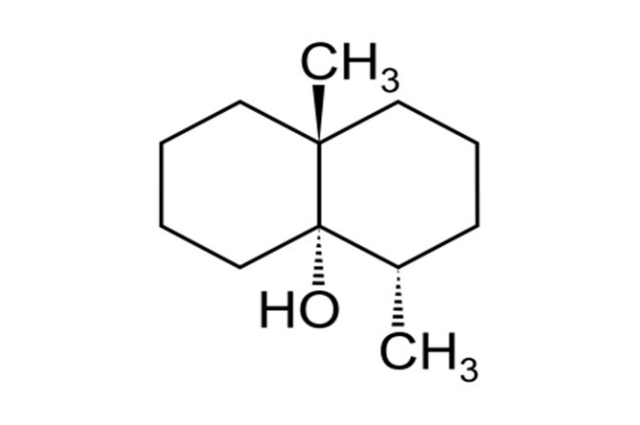Have you ever felt the smell of rain? I am sure everyone must have experienced and liked the musty smell of the earth during or after the rains. The petrichor scent is nostalgic and has been attempted to be imitated by perfumeries, yet without success. Do you know why rain smells like this?
The smell is all because of a unique compound called "Geosmin".

Well! What is Geosmin and how it came into existence?
This earthy smell has been the longest-recited subject for more than a thousand years and continues to be a fascination for poets and experienced by all. The compound responsible for the odor of the earth was first recognized in 1891, yet got its identity in 1965 after the isolation of the main compound by Gerber and Lechevalier who named it “geosmin” a greek word for earth, "ge" and smell, "osme" [1,2].
Geosmin is a volatile colorless liquid, belonging to the large family of terpenoids. The compound is a bicyclic alcohol with the formula C12H22O, Chemists find it to be an irregular sesquiterpenoid synthesized from the universal sesquiterpene precursor farnesyl pyrophosphate [3]. Similarly, geosmin also has a peculiar odor like other members of terpenoids and can be sensed by a vast range of animals including flies, camels, humans, etc. Humans with a not-so-popular olfactory system are sensitive to this molecule and detect it in picomolar concentration [4].
Where is Geosmin found?

If something smells like mud, be sure it's due to the presence of geosmin (of course there must be exceptions). As the name suggests, the smell can be found mostly in moist soil after the first few drop of rain touches the earth. In addition to soil, geosmin can also be found in places such as water, alcohol, fish, beetroot peels, cactus flower, mushrooms, and carrots. With its pleasing aroma, geosmin is considered a persistent water pollutant and is known to flavor water, wine, fish, and other foods [4].
Who produces Geosmin?
Scientists have discovered since the 1960s that geosmin is synthesized by a large group of soil-dwelling prokaryotes, mostly members of the Actinobacteria (Streptomyces spp. and Nocardia spp), Myxobacteria (Myxococcus xanthus and Stigmatella aurantica), Cyanobacteria (blue green alage), and fungi (mushrooms, Penicillium spp., Botrytis cinerea, and Chaetomium sp.). Synthesis of geosmin has also been reported in some liverworts, plants, protozoa, and insects.
Why do microbes produce geosmin?
Microorganisms possess the genes for geosmin synthesis, meaning that the compound is essential for microbes, yet its exact function and why microbes expend energy to produce this compound is not yet known. Various studies suggested the compound as a chemical signal to attract soil-dwelling insects including spiders, mites, and arthropods (springtails). Springtails use this signal to locate the bacteria (a source of nutrients) and benefit the bacteria by helping in dispersal of bacterial spores [5].
Another group of studies reported that geosmin is used as a signal to deter prey because geosmin-producing bacteria are mostly toxic and thus not palatable. Bacteriophage nematode C. elegans show aversion to this compound. Different insects show different responses to geosmin, for example, geosmin acts as a strong attractant to the mosquito and mediates egglaying site selection, while repels the fruit fly [6].
Geosmin in the aroma market
Because of the soothing smell of geosmin, perfume manufacturers have tried to mimic the scent by using a synthetic form of this compound in candles, essential oils, and perfumes.
. . .
Reference:
- Gerber, N.N. & Lechevalier, H.A. (1965). Applied Microbiology, 13, 935–938.
- Gerber, N.N. (1968). Tetrahedron Letters, 9, 2971–2974.
- Zaroubi L, Ozugergin I, et al., 2022. Appl Environ Microbiol.
- Jiang, J, He, X et al., (2022). Applied and Environmental Microbiology.
- Becher, P. G., Verschut, V., et al., (2020). Nature Microbiology.
- Dickschat, J. S., Bode, H. B. et al., (2005). Journal of organic chemistry.
